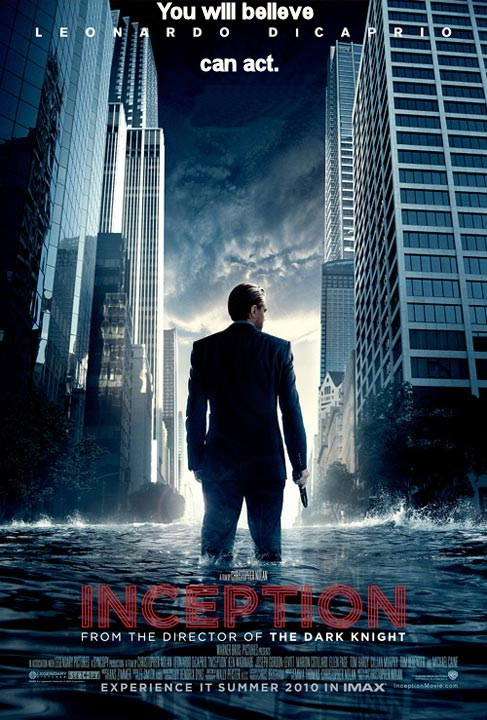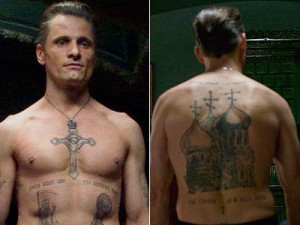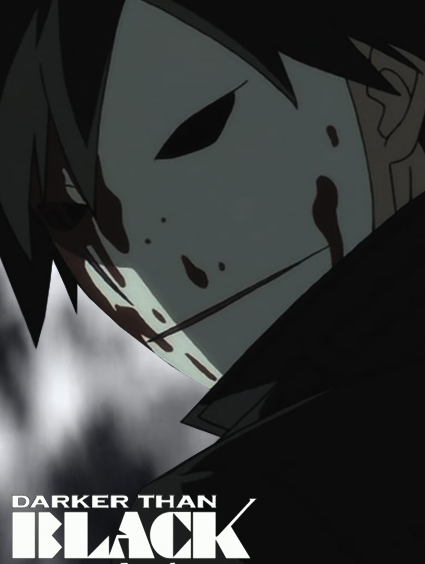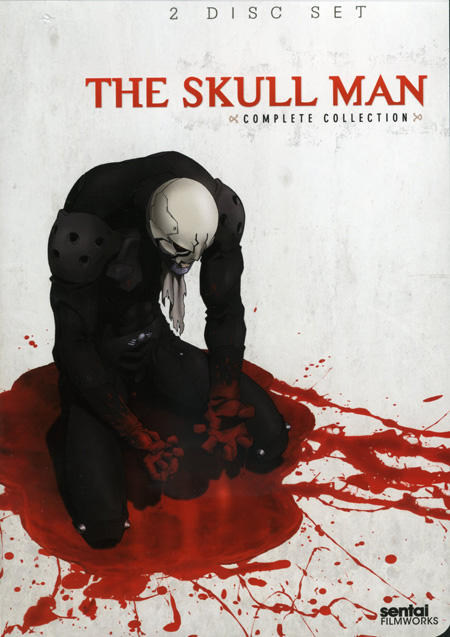Balls and Walnuts
more than you ever wanted to know
Category Archives: Reviews
I watch Prometheus so you don’t have to.
Don’t bother with this one, folks. Really.
Midway through Prometheus — possibly it was the scene where the biologist plays coochie-coo with a cobra-like alien that goes into a full threat display twice, and only kills him when he goes in for the third chin-tickle — I decided there was a niche for a review containing nothing but spoilers. Because surely there are folks in the world who would like to know what’s in this Alien prequel, but don’t want to waste their money.
If you’re part of that crowd, follow me below the fold.
That does it. No more best sellers.
I finished Alice Sebold’s The Lovely Bones today. And oh, my.
Here’s the premise: 14-year-old Susie Salmon is raped, killed, and dismembered by a neighbor. She narrates the novel from “her heaven,” wherein she is perpetually 14, perpetually on her way to high school. Susie is, to put it mildly, obsessed with the living; although there are hints that others in her shoes eventually move on to a better place, she is content to haunt the living — her father, mother, siblings, the boy she had just kissed, the girl who brushed against Susie’s soul in its fevered rush from Earth, and even her murderer.
What The Lovely Bones does well is detail the way violent crime warps and devastates the lives of those close to the victim; Sebold also does a nice job showing that not all changes wrought by such a horror are bad. If Sebold had been content to leave these as her sole themes, if she had written a Susie-free novel, this would have been a fine book. Instead, we have a novel that can’t make up its mind between first person narration and omniscient POV. Because, yes, Susie is terribly omniscient, delving into her various subjects’ hearts and minds, their fears and desires, their most buried memories.
And yet we only occasionally see Susie’s reaction to what she witnesses. It’s so rare that when it happens, it stands out. To me, Susie eventually seemed less and less a character, more and more a manifestation of Sebold herself.
Spoilers ahead. You’ve been warned.
Nine reasons to watch Ninja Warrior
My family — certainly Karen and I, and to a lesser degree Jake — are addicted to G4TV’s Ninja Warrior. If you’ve avoided Ninja Warrior thinking that Japanese game shows are ridiculous confections wherein contestants have T-bone steaks strapped to their foreheads and are threatened by a hungry monitor lizard, or where they must demonstrate their proficiency at speed-eating a dozen linked sausages and inhaling spaghetti through their noses, then you’re doing yourself a disservice. Ninja Warrior is something altogether different; I would argue it’s the ultimate sport.
Here’s the setup: there are two Sasuke (Ninja Warrior) competitions per year. Each begins with 100 contestants, who progress through (or are eliminated by) four stages, with several obstacles per stage. The obstacles require varied physical skills, such as upper body strength, agility, balance, and speed. Even in Stage One, many of the obstacles are so insanely difficult that most of the 100 contestants are eliminated. It’s not uncommon for no contestant to proceed to Stage Four.
Now, this is a ninja warrior:

Primary obstacle here is getting past her guns.
but unfortunately she’s not one of the competitors. (Women do compete, but sadly even most of the athletes are undone by the first stage. Many of Ninja Warrior’s obstacles favor brawn over agility and balance.) Here’s a real Ninja Warrior — rising star Yuuji Urushihara.
He’s not an Olympic athlete, although many have competed on Ninja Warrior. He’s not a rock climber or a weight-lifter or a runner, as far as I know. He’s a shoe salesman — and that’s one of the main reasons to watch Ninja Warrior. But I’m getting ahead of myself. First, watch a bit to get a better idea of what’s involved:
I defy you to watch the Pipe Slider (beginning at around 3:59) and not squirm.
Need more reasons to watch Ninja Warrior? Read on.
Inception
Jake and I saw Inception today, and while I liked the movie, it’s one of the trailers that really blew my mind.
They’ve made a movie about the creation of Facebook. No kidding. It’s called The Social Network and the trailer was about as thrilling as the title. While I enjoyed Jessie Eisenberg in Zombieland, I’m not following him to this execrable commercial-as-drama. What’ll be next, You’ve Got Gmail? Unless the Harvard students in this film develop a hunger for human brains, I’ll sit this one out.
But back to Inception. I almost didn’t see it because I happen to dislike Leonardo DiCaprio, or as he’s known in this household, Leonardo DiCrapio. He’s one of those actors (like Tom Cruise) who, for me anyway, always seems like he’s playing a role rather than living the character. Karen sat this one out because she’s even less forgiving than me — she thought his portrayal of Howard Hughes in The Aviator was lifeless.
Having seen the movie, I have one thing to say. Or rather, one thing to photoshop.

Just a few comments for now, since it’s late and I still need to play Civilization IV and kick some Incan ass. (Hey, they started it!) But first, if you haven’t read a review, here’s the movie in a nutshell: DiCaprio’s character (Cobb) and his band of technicians/psychologists/artists (they’re a bit of all three) can delve into a dreamer’s mind to extract secrets. They’re industrial espionage operatives, and they’ve been given a new job: to plant an idea, which in their parlance is known as inception. Cobb would rather not take this one on, since inception is either difficult or impossible (and, we come to learn, dicey emotional turf for him), but his employer, Saito, makes him an offer he can’t refuse. Pull this one off and Saito will fix some pending charges back home that prevent Cobb from returning to his family.
Hey, um . . . now, why couldn’t his family rejoin him in some extradition-less foreign country? Forget it, forget it. Suspend disbelief.
Some thoughts . . .
1. The movie has an interesting narrative structure. Not as ingenious as director Christopher Nolan’s earlier Memento, but still challenging. At one point in the movie, the dreams are nested four deep, so there are five layers of reality (one real one, four dream), and Nolan still manages to tell a clear story.
2. Which is not to say that the plot doesn’t have problems. Jake and I being Hoffmans, we promptly tore it apart not five minutes out of the theater.
Which is not to say that we didn’t still enjoy it.
3. Nolan wrote the screenplay, too, and he made superb use of a literary device known as resonance — repetition of a word or image (in Inception‘s case, some of both) to achieve depth and emotional punch. Marvelous work.
4. This movie is a smorgasbord of former child actors. Lukas Haas (remember the kid in Witness?) is here, as is Joseph Gordon-Levitt (“Third Rock from the Sun”). Ellen Page was in two TV shows as a kid: something called “Pit Pony” and another something called “Trailer Park Boys.” And Leonardo DiCaprio made his bones as a teenager in “Santa Barbara,” “Roseanne,” and “Parenthood.”
5. The science is bankrupt, inasmuch as Nolan perpetuates an old myth that time passes more slowly in dreams than it does in the real world. Did I say that right? In other words, five minutes in a dream equals one hour in the real world, something like that, and the deeper nested you are in dreams, the more the time dilation is magnified. Not a minor plot point — crucial, in fact.
A renowned sleep and dream researcher named William Dement determined something like 40 years ago that time passes at the same rate in dreams as it does in the real world. He did this by waking subjects up at a specified time following the onset of REM sleep and asking them to recount what they had experienced. Repeatedly, five minutes of dream time contained about five minutes worth of stuff, ten minutes encompassed ten minutes, and so forth.
But don’t let that spoil your enjoyment of the movie.
5. One thing I really, really liked: you know how in caper movies (think Raiders of the Lost Ark, for example), the premise and the characters are set up in the beginning with an action-packed caper holding plenty of near-disasters, but the final result is oh so slick? Well in Inception, the initial caper goes to hell and then gets worse. So refreshing. Also refreshing: it’s a movie about dreams, and yet Nolan avoided scenes with gratuitous sex and nudity.
That’s it for now . . . what did you think?
D.
Going mainstream
Sometimes it seems as though my favorite directors are going mainstream. When Tim Burton made it big with Batman and Batman Returns, I thought we had lost him for good; but in the midst of all that blockbusterishness, he also created Edward Scissorhands, Ed Wood, and Mars Attacks!, and his recent movies continue his tradition of the weird. (Oooh, look! He’s working on a feature-length version of Frankenweenie, and Abraham Lincoln: Vampire Hunter is in pre-production!)
But then there’s Sam Raimi, who gave us the brilliant Army of Darkness, the capstone of his Evil Dead trilogy. Raimi hit mainstream with the Spider-Man movies, and if Drag Me to Hell is any indication, his horror has gone mainstream, too. Raimi’s IMDB page indicates he has 20 projects under development. Is that humanly possible?
My latest sorrow is for David Cronenberg, a guy who was creating slipstream* movies before slipstream fiction even had a name, with gems like Videodrome and Dead Ringers, and later Naked Lunch and Crash pushing our comfort zone for what a movie should be.
But then in 2005 he teamed with Viggo Mortensen in A History of Violence, a solid thriller that I found fun to watch, but fun is not what I expect from a Cronenberg movie. Interesting, uncomfortable, surprising . . . and maybe fun is fourth on the list. And in 2007, apparently happy with the collaboration, Cronenberg gave us Mortensen-as-Russian-mafiose in Eastern Promises.

You get to see all this and so much more.
The premise: London midwife Anna (Naomi Watts) delivers the baby of a 14-year-old Russian prostitute, who does not survive the delivery. Among her effects is a diary written in Russian; fortunately for the plot, Anna is the child of Russian immigrants, and has an uncle who can translate. But Uncle is a bit of a dick, so she follows a lead provided by a business card buried in the diary: she goes to Semyon (Armin Mueller-Stahl), a Russian restaurateur who seems like such a nice man, especially when he’s not trying to kick the virility out of his son Kirill (French actor Vincent Cassel).
Viggo Mortensen plays Nikolai, Kirill’s friend and driver. Nikolai is portrayed as ambitious, smart, and cool, the ice cube to Kirill’s blow torch, and he’s enough of a bad boy to intrigue and frighten Anna. At the risk of dropping a few spoilers, the lack of a love scene between Anna and Kirill was one of the movie’s few surprises. That Semyon is a right bastard and Nikolai is not all he seems to be were “twists” telegraphed miles in advance.
Cronenberg fans will appreciate the movie’s gore, which included the most realistic throat-cutting depiction I have ever seen. (No, really — it’s not that easy to slit a throat, and for once we get to see that you have to work at it. I mean there’s a reason our heads don’t just pop off. All that muscle and skin and gristle.) But if you were hoping for the Russian version of The Godfather, or even a gangster movie with the depth of, say, Miller’s Crossing, then you’re going to come away disappointed.
Chief among the film’s deficiencies were a lack of character development and inadequately developed motivation. Who is Nikolai and why is he taking these risks? For that matter, who is Semyon and why (other than the fact that he is a crime boss) does he have enemies back in Mother Russia? Even the movie’s central killing — of Soyka, son and made man from a rival Chechen family — receives only hints of an explanation. If well developed characters have six layers**, we are provided only the first one or two.
And some things are just plain inexcusable. There’s a vicious, bloody, nekkid-butt-waving and wiener-flopping fight scene in a steam bath, which Karen found objectionable for its poor choreography. I agree with her but I was more offended by the premise that the bad guys would mistake Nikolai for Kirill because of his star tattoos (sign of a made man). True, they’ve never met Kirill and don’t know what he looks like, but surely they would recognize tattoos that are less than two days old? And this is a pivotal moment, plot-wise.
Absent from Eastern Promises is that slipstream feeling of strangeness. No, I wasn’t expecting Nikolai’s hand to morph into a gun, nor did I expect him to pull a cup of borscht from the middle of his chest. But aside from some high stakes gore, the movie never takes chances.
Cronenberg is working on a sequel, which should come as no surprise to anyone who has seen the movie. By movie’s end (SPOILER), driver and dirty work guy Nikolai has risen to seat of power in this family, much as cadet James T. Kirk gloms onto the captain’s chair near the end of the recent Star Trek movie. (The ascension is every bit as unbelievable.) Will Nikolai and Anna meet again and relieve our sense of coitus interruptus? Count on it.
I enjoyed Eastern Promises, found it “fun,” especially Armin Mueller-Stahl’s sweet and sparkly Russian grandpa with a heart of bile. I’m just not so sure that “fun” is what I want from David Cronenberg.
D.
*From Sterling’s article:
Instead, this is a kind of writing which simply
makes you feel very strange; the way that living in
the late twentieth century makes you feel, if you are
a person of a certain sensibility. We could call this
kind of fiction Novels of Postmodern Sensibility, but
that looks pretty bad on a category rack, and requires
an acronym besides; so for the sake of convenience and
argument, we will call these books “slipstream.”
But Mr. Sterling, Novels of PMS does have a certain je ne sais quoi.
**I just made that up. But it sounds about right, doesn’t it?
Darker than Black
More anime-foo from Karen.
Hmm, not much response to my Skull Man post. . .
After watching Skull Man, I checked Wikipedia for other works by Studio Bones and found Darker Than Black. DO NOT read the Wikipedia entry on this, it will spoil the series for you.
 I really loved DTB and went into fangirl mode after the sixth episode. At that point, I was scrambling to buy the DVDs and considering paying for next morning overnight shipping. That’s taking into account that I already knew all the episodes were all available online for free – but not in high resolution. I wanted to see every detail.
I really loved DTB and went into fangirl mode after the sixth episode. At that point, I was scrambling to buy the DVDs and considering paying for next morning overnight shipping. That’s taking into account that I already knew all the episodes were all available online for free – but not in high resolution. I wanted to see every detail.
DTB is a sci-fi, film noir, espionage action-adventure about a highly skilled, paranormal assassin/spy named Hei, aka the Black Reaper, aka BK-201, aka Li Shun Sheng, aka the cursed contractor. That is a lot of names but it reflects the complex aspects of Hei’s character. At any particular moment, whom are you seeing? The spy? The other-worldly creature? The cold-eyed assassin? The tiny glimmer of a human being?
The basic premise is that a meteor hit Tokyo ten years ago. Investigators were immediately dispatched to the blast site and all but one ended up in pieces, scattered over the area. The stars disappeared, replaced by “false stars,†each representing a contractor, a human transformed into a sociopath with a paranormal ability. Governments, corporations, and mobsters saw their potential and quickly employed them as spies, assassins, bodyguards. Various intelligence agencies, CIA, MI6, FSB, etc., ruthlessly use them to gain technologic and scientific advantages. Basically, it’s a ‘John LeCarre’ world with science fiction elements.
CORRECTION! Karen asked me to add: the meteor crash site is referred to as Hell’s Gate, and it’s locked away behind a giant perimeter wall. You don’t find out about the meteor until episode 11 or 12.
Contractors each have one ability which varies from individual to individual; one may have control over gravity or another may teleport objects, and so forth. There is a price to be paid for the power, however, and the contractor is compelled to perform some meaningless or trivial (or not so trivial) act such as place pebbles in a particular pattern, eat strange foods, drink the blood of children . . . Look, there’s a reason the show is called Darker Than Black. There is a good deal of violence but I didn’t find it too graphic. Jake did, though.
So contractors are sociopaths with OCD, or at least, that’s what their employers prefer to believe. A show about sociopaths would be rather boring and predictable, however, and DTB is anything but. In the first few minutes of the first episode, Hei tortures and murders a rival agent. Did I mention he’s an anti-hero?
Well, after that introduction, the show insidiously begins to make you like Hei. He has a dead-pan sense of humor and he is very intelligent. I do not want to give too much away, but there is a lot more to Hei than just killing people in really cool ways. He is very cool, though.
DTB is an entertaining series with great emphasis on character development. But it is not a perfect show. The producers tend to info-dump and some of the tragic moments just didn’t work for me. The 7th and 8th episodes are essentially filler episodes, but do contain information crucial to the first season’s story arc. Subsequent episodes get back on track and the action sequence in episode 10 is great. The last 5 episodes (eps. 21-25) form the ending, which I really liked. Not surprisingly, Studio Bones doesn’t coddle the audience and you need to pay attention to some degree, but not nearly as much as with Skull Man. The English dub is surprisingly good, but I did prefer the subtitled version. Both versions can be seen on the Funimation website. If you like the first six episodes, you should buy the box set which encompasses the first season, $40 on Amazon, $56 on Barnes & Noble if you prefer to be politically correct.
Please, please buy this. Maybe there will be a season 3. (Season 2 was, well, problematic.)
K.
Skull girl
If my dear wife is a Civilization widow, then I am an anime widower. Today, Karen hijacks my blog to give you her intro to anime, with a review of Skull Man (episodes of which can be viewed free of charge here).
I’ve grown so bored with mainstream U.S. movies, I went to the other side of the world: Japanese anime. DirecTV makes it easy to download programs from “channels†like Cartoon Network’s Adult Swim and Anime Network. And thus began my descent into madness.
 The stranger shows are available on Anime Network, with everything from kiddie shows to near kiddie porn. That is how I stumbled upon Skull Man, a complex mystery/sci-fi/alt-history anime for adults.
The stranger shows are available on Anime Network, with everything from kiddie shows to near kiddie porn. That is how I stumbled upon Skull Man, a complex mystery/sci-fi/alt-history anime for adults.
Like most popular culture media, anime has its tropes. The songs on the intro credits usually suck, imho, so don’t let that deter you; the soundtrack music may reflect a completely different genre. Flashbacks/flashforwards are common, so be alert to changes in music, appearances, etc., and the vast majority are set in an alt-history, science fiction universe, so assume that is true unless specified otherwise. Also, watch for changes in the intro or material tacked on after the end credits, especially during the last episode. Lastly, in action/adventure anime, or even Japanese movies in general, the fighting lasts a very short time (much less expensive to animate), with the emphasis on speed, accuracy and the perfect sword cut. For example, in Kurosawa’s film Sanjuro, the climactic duel lasts about 1/4 of a second, perhaps less. The arterial blood spurt lasts longer.
But back to Skull Man. Revered manga/anime pioneer Shotaro Ishinomori wrote a one-issue manga in 1970, which featured a decidedly anti-hero protaganist unconcerned with collateral damage in his search for revenge. With some retro character and set designs intended to pay homage to the original manga, in 2007, Studio Bones used the story as inspiration for a 13-part anime series. From Wikipedia,
. . . the story closely focuses on a journalist named Hayato Mikogami who returns to his hometown at Otomo to investigate strange rumors of killings done by a man wearing a skull mask. Tailed tightly by a young photographer, Kiriko Mamiya, the two soon uncover the many strings of connections between the victims, a local pharmaceutical company, a mysterious new religious sect and strange half human, half animal creatures, which roam the night streets for blood.
This isn’t Kansas and Toto would have gotten eaten, anyway. Moreover, the labyrinthine plot is deliberately confusing and complex, featuring a host of characters with differing agendas, references to Nietzsche, Richard Wagner, Zoroastrianism, Shakespeare, and as an added bonus, excessive violence featuring monsters with three eyes.
I am amazed Studio Bones decided to produce this series. The targeted demographic must be male adult anime horror fans who enjoy paying close attention to details. Most of the time is spent on character development, particularly in the middle episodes, and the action sequences mainly occur in the last three. The plot is NOT spoon-fed to the audience and I had to watch the series twice to understand why everyone did what they did, how they did it, and when did it happen. Bones did play fair, though, with all the questions answered if you look hard enough, but sometimes you need to look really, really hard.
So, in general, I enjoyed this anime. It’s not perfect, e.g. I didn’t like the name “Cocoon of Chaos†which may simply not translate well. The general quality of the animation was good, with CGI effects blending well with traditional hand-drawn techniques. The original opening song sucked but was replaced with a better alternate in the version provided by Anime Network. You can watch the episodes for free, but if you like the first few, you should BUY the series so as to encourage the production of this type of program.
OK, next time, I’ll write about a more mainstream show (Darker Than Black), and I’m not talking about kiddie porn anime(s).
Balls
Here’s one for your Netflix queue
Quick: name five real science fiction movies. Real ones, not monster movies, nor pseudo-Westerns or pseudo-Samurai or pseudo-whatever with a thin overlay of SF . . . I’m talking a movie that could not exist without the science at its core, and moreover, a movie that focuses on the themes that SF deals with best.
What does it mean to be human, for example.
So toss out Terminator and its sequels (pursuit by crazed killer, feh), Alien and its sequels (monster movie), Star Wars and its prequels (fairy tale) and what are you left with? Karen and I came up with 2001, THX 1138, and Blade Runner. Maybe Planet of the Apes, for all its flaws.
And then there’s Moon (2009).
 Sam Rockwell plays Sam Bell, the sole flesh-and-blood operator of the helium-3 mining station Sarang, on the Moon’s far side. He’s accompanied by GERTY, the soft-spoken AI (voiced by Kevin Spacey) who will instantly conjure memories of HAL 9000. Sam’s nearing the end of his three-year term, with only two weeks to go before shipping back to Earth to be reunited with his wife and the nearly three-year-old child he’s never met. But all is not well with Sam; he’s having headaches and hallucinations of increasing intensity, and when he crashes his rover into one of the station’s four harvesters, things really start going to hell.
Sam Rockwell plays Sam Bell, the sole flesh-and-blood operator of the helium-3 mining station Sarang, on the Moon’s far side. He’s accompanied by GERTY, the soft-spoken AI (voiced by Kevin Spacey) who will instantly conjure memories of HAL 9000. Sam’s nearing the end of his three-year term, with only two weeks to go before shipping back to Earth to be reunited with his wife and the nearly three-year-old child he’s never met. But all is not well with Sam; he’s having headaches and hallucinations of increasing intensity, and when he crashes his rover into one of the station’s four harvesters, things really start going to hell.
This is one of those films that cannot be reviewed. Either you screw up the next viewer’s experience with spoilers, or you provide such sketchy details that the reader draws the wrong conclusions. Yes, there’s a ruthless corporation (anyone with any sense of irony whatsoever will see right through the movie’s opening, wherein we are treated to a Lunar Industries Limited commercial — aren’t they wonderful?) and Kevin Spacey’s GERTY seems more than a little likely to win the AI Most Likely to Go Nuts Award, so isn’t this more of the same-old same-old?
Um, no.
Instead, this is a movie that confounds its viewers’ expectations, that provides a richness of detail that can keep people arguing for days (check out the discussion boards on IMDB — after you’ve seen the movie, of course), that packs a huge dramatic punch, and that tackles one of the big SF themes in a fresh and provocative way. There’s even a sly bit of social commentary here, snuck in on us with the film’s last line. It’s subtle and damn near everyone watching the movie will pass it off as a joke. And no, it’s not the oh so tired “Aren’t big corporations eeeeevil?” trope.
Good stuff, my friends.
D.
Watching a grown man cry
Overall this has been a real once in a lifetime experience. It was hard, really hard and unforgettable. Sometimes the hardest things are the most memorable and that’s certainly true of this. I remember the journey between Dogpack and Tincup most vividly. I had difficult times and great times. I had one of the most beautiful places on the planet all to myself, I could swim naked in the lake, get up in the middle of the night and howl at the moon and I came pretty close to some of the big icons of the wilderness. At my first camp got within 20 metres of a large moose and on the creek I almost bumped into a moose surrounded by white timber wolves. I came pretty close to a bear and filmed a caribou swimming across a lake, American eagles would come and check me out and for 50 days I lived off the wild. It makes me smile to think of it – a big smile.
Last refuge of the blocked writer?
. . . writing reviews.
Here’s my review of Talebones #37. Enjoy.
D.
